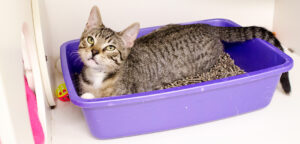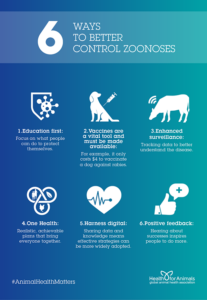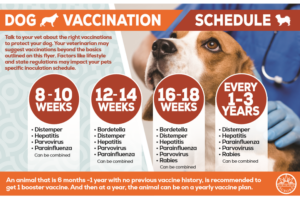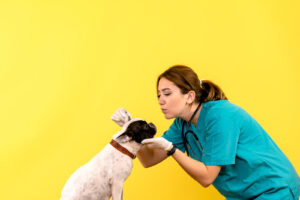Zoonosis: Diseases That Pets Can Transmit to Humans

Published on: 27/03/2025
Pets are an essential part of our lives, offering companionship, love, and emotional support. However, as much as they bring joy, they can also carry diseases that may be transmitted to humans. These diseases, known as zoonotic diseases or zoonosis, can pose serious health risks if not properly managed. Understanding how these infections spread and learning how to prevent them is key to maintaining a safe and healthy environment for both pets and their owners.
🏥 What Is Zoonosis?
Zoonosis refers to any disease or infection that can be naturally transmitted from animals to humans. These diseases are caused by bacteria, viruses, parasites, or fungi that live in or on animals and can be transferred through direct or indirect contact.
Zoonotic diseases can be transmitted in various ways:
-
Direct contact – Through bites, scratches, saliva, or skin contact with an infected pet.
-
Indirect contact – By touching contaminated surfaces, bedding, or pet waste.
-
Foodborne transmission – Through consuming contaminated food, raw pet food, or unpasteurized dairy products.
-
Waterborne transmission – Drinking or coming into contact with water contaminated by animal feces or urine.
-
Vector-borne transmission – When insects like fleas, ticks, or mosquitoes transfer diseases from animals to humans.
Children, elderly individuals, pregnant women, and people with weakened immune systems are at a higher risk of developing severe complications from zoonotic diseases.
🔎 Common Zoonotic Diseases in Pets
While pets are generally safe to be around, some diseases they carry can affect humans. Below are the most common zoonotic diseases, their causes, symptoms, and prevention methods.
1️⃣ Toxoplasmosis
-
Cause: A parasite called Toxoplasma gondii found in cat feces.
-
How It Spreads: Humans become infected by handling contaminated cat litter, soil, or consuming undercooked meat.
-
Symptoms in Humans: Flu-like symptoms, muscle aches, and fatigue. In pregnant women, the parasite can cause birth defects or miscarriage.

-
Prevention:
-
Clean litter boxes daily.
-
Wash hands after handling cats or soil.
-
Avoid eating raw or undercooked meat.
-
Pregnant women should avoid cleaning litter boxes.
-
2️⃣ Leptospirosis
-
Cause: Bacteria called Leptospira found in the urine of infected dogs and rodents.
-
How It Spreads: Contact with contaminated water, soil, or urine.
-
Symptoms in Humans: Fever, muscle pain, nausea, kidney or liver damage in severe cases.
-
Prevention:
-
Vaccinate dogs annually.
-
Avoid stagnant water sources.
-
Wear gloves when cleaning pet urine.
-

3️⃣ Rabies
-
Cause: The rabies virus, which attacks the nervous system.
-
How It Spreads: Through bites or scratches from infected animals.
-
Symptoms in Humans: Fever, hallucinations, paralysis, and death if untreated.
-
Prevention:
-
Ensure pets are vaccinated.
-
Avoid contact with wild or stray animals.
-
Seek immediate medical attention if bitten.
-
4️⃣ Ringworm (Dermatophytosis)
-
Cause: Fungal infection affecting the skin of dogs, cats, and humans.
-
How It Spreads: Direct contact with infected pets or contaminated surfaces.
-
Symptoms in Humans: Red, itchy, ring-shaped rashes.
-
Prevention:
-
Keep pet bedding clean.
-
Wash hands after handling pets.
-
Treat infected animals promptly.
-

5️⃣ Salmonellosis
-
Cause: Salmonella bacteria commonly found in reptiles, birds, and contaminated food.
-
How It Spreads: Handling infected animals or consuming contaminated pet food.
-
Symptoms in Humans: Diarrhea, vomiting, fever.
-
Prevention:
-
Wash hands after handling pets.
-
Avoid raw pet diets.
-
Keep pet food properly stored.
-
6️⃣ Campylobacteriosis
-
Cause: Campylobacter bacteria found in the intestines of dogs, cats, and farm animals.
-
How It Spreads: Contact with infected pet feces, contaminated food, or water.
-
Symptoms in Humans: Diarrhea, fever, stomach cramps.
-
Prevention:
-
Pick up pet waste immediately.
-
Wash hands thoroughly.
-
Avoid drinking untreated water.
-
7️⃣ Bartonellosis (Cat Scratch Disease)
-
Cause: Bartonella bacteria found in flea-infested cats.
-
How It Spreads: Scratches or bites from infected cats.
-
Symptoms in Humans: Swollen lymph nodes, fever, headache.
-
Prevention:
-
Treat cats for fleas regularly.
-
Avoid rough play that could lead to scratches.
-
🛡️ How to Prevent Zoonosis
Although the risks of zoonotic diseases exist, they can be minimized with proper precautions. Follow these steps to ensure a safe and healthy relationship with your pets:
✔️ Vaccinate and deworm pets regularly.
✔️ Practice good hygiene: Wash hands after handling pets, food, or cleaning litter boxes.
✔️ Control fleas and ticks to prevent vector-borne diseases.
✔️ Keep living spaces clean by disinfecting pet bedding and play areas.
✔️ Avoid contact with wild or stray animals.
✔️ Supervise children when interacting with pets to prevent bites and scratches.
✔️ Cook meat thoroughly and avoid raw pet diets that may harbor bacteria.
✔️ Seek veterinary care regularly to detect potential health issues early.

🏡 Safe and Healthy Coexistence with Pets
Owning a pet is a rewarding experience, and with the right care, we can enjoy their companionship without health risks. Being informed about zoonotic diseases and taking preventive measures ensures the safety of both pets and humans.
If you have any concerns about your pet’s health, consult your veterinarian. By staying proactive, you can ensure a happy and healthy environment for your furry friends and your family.







